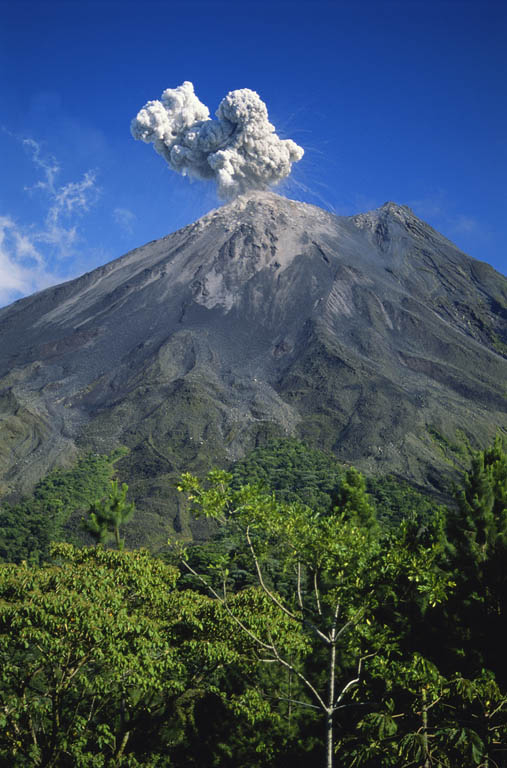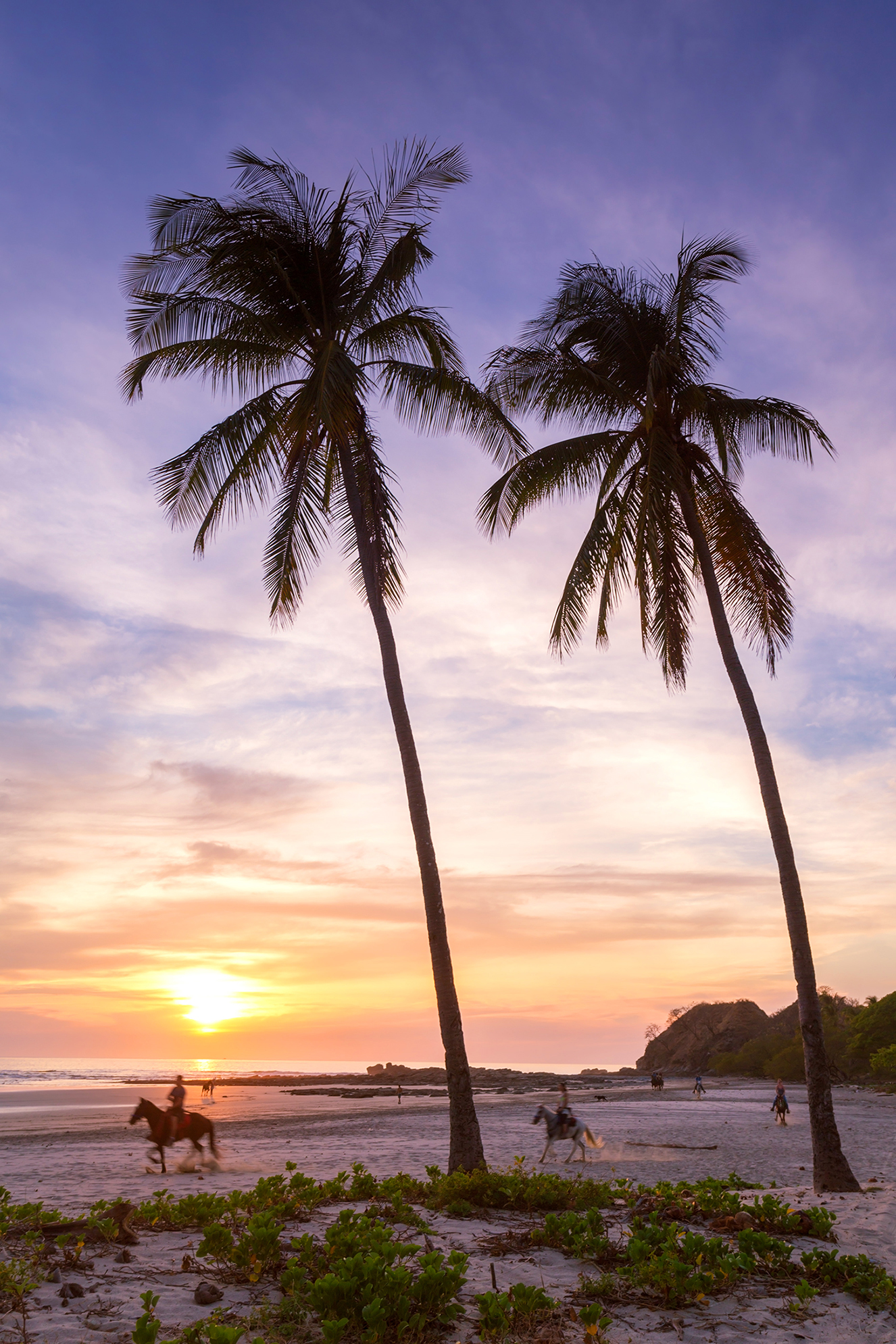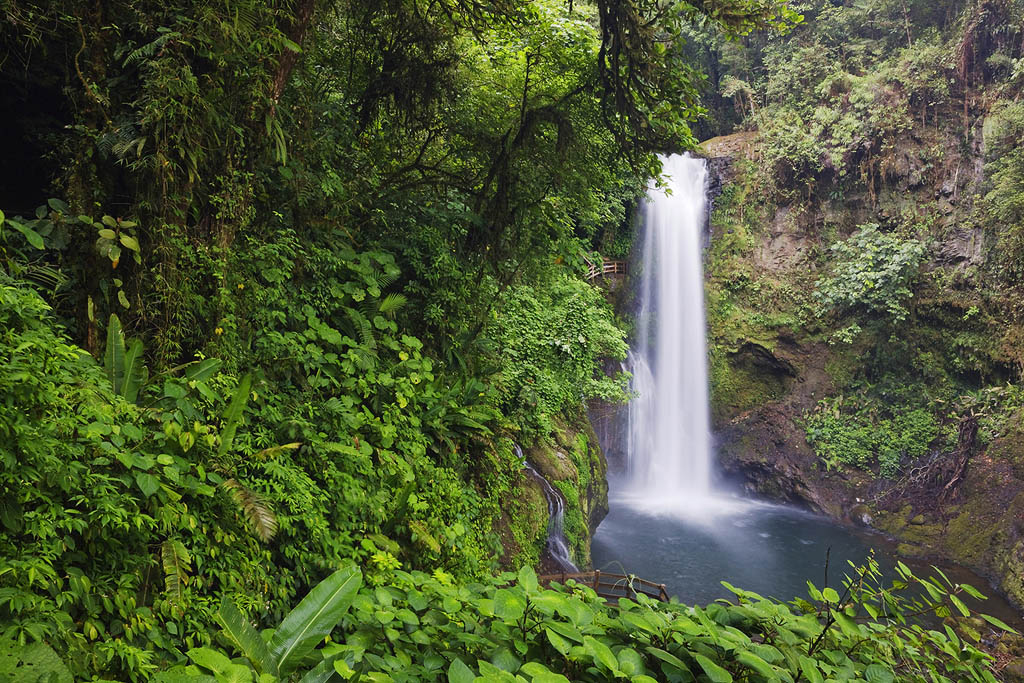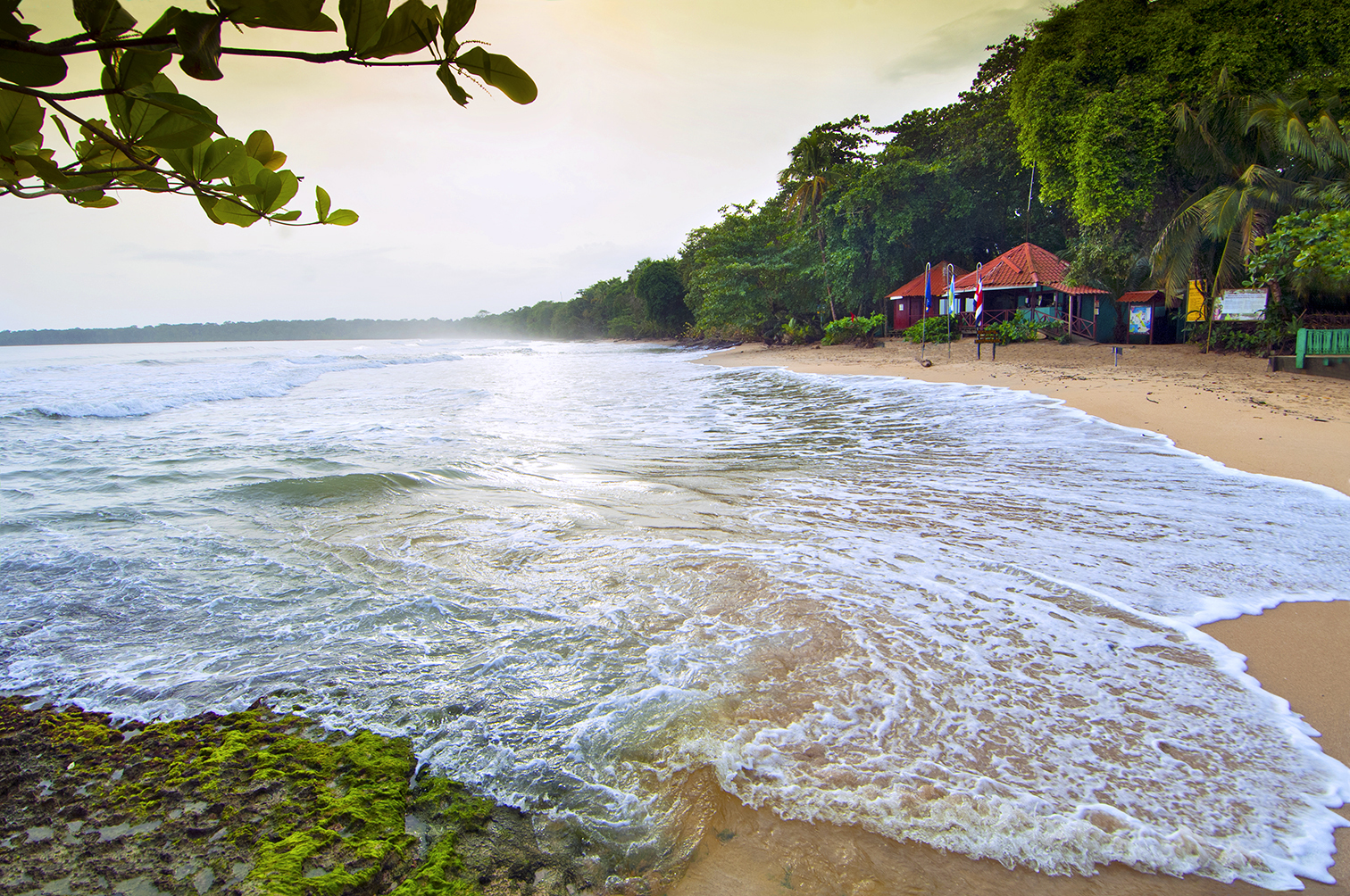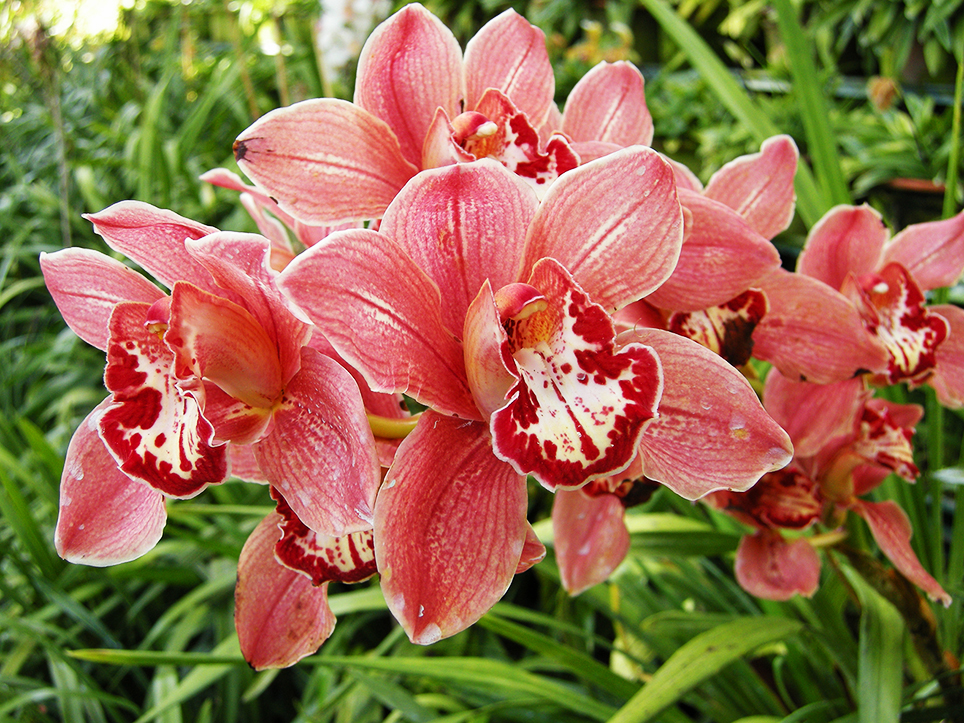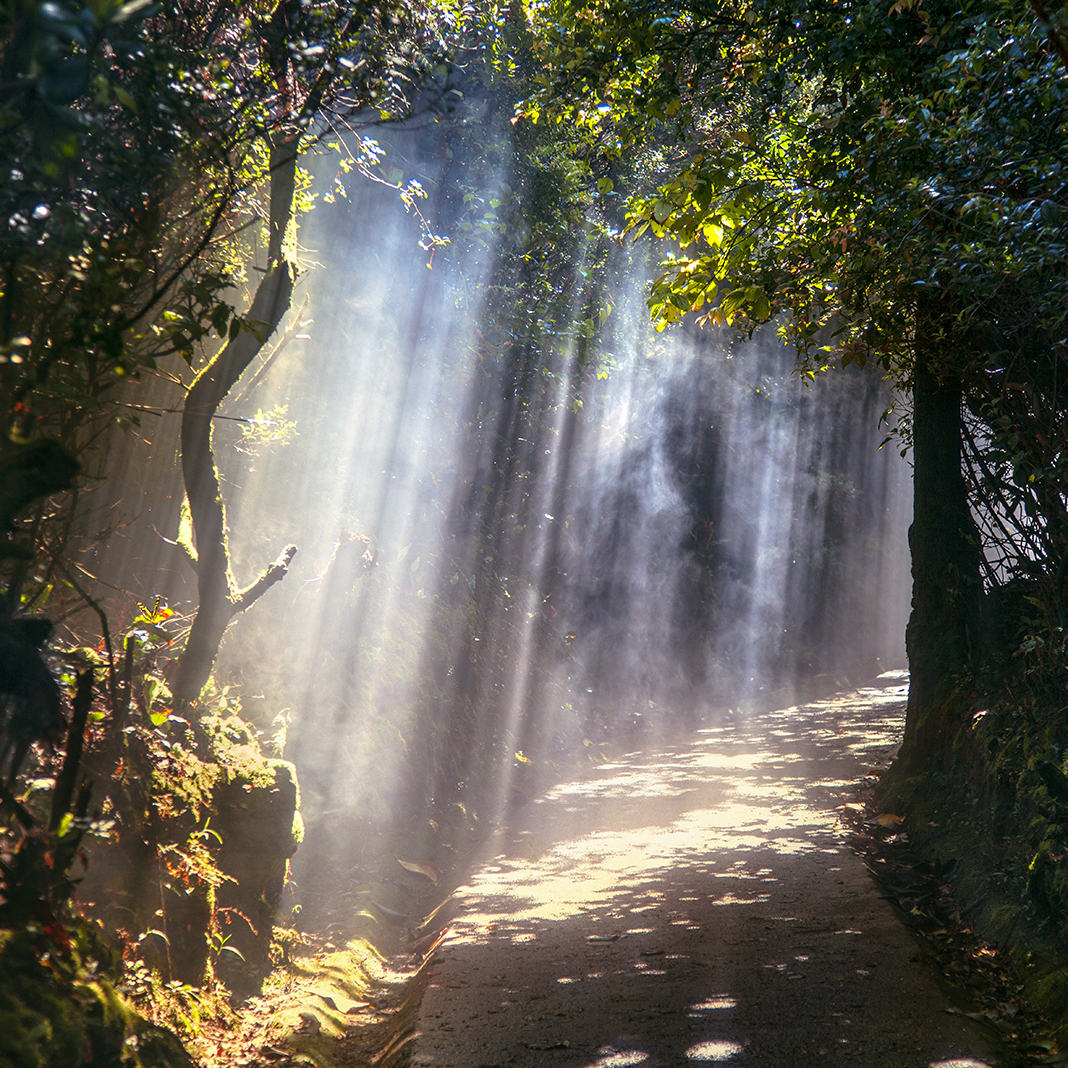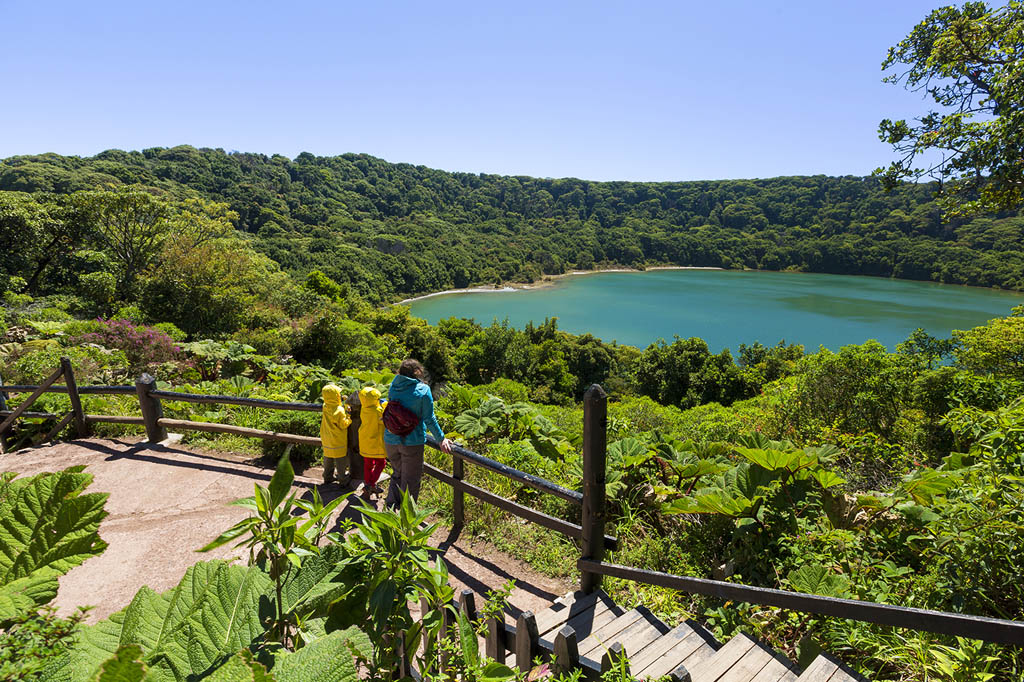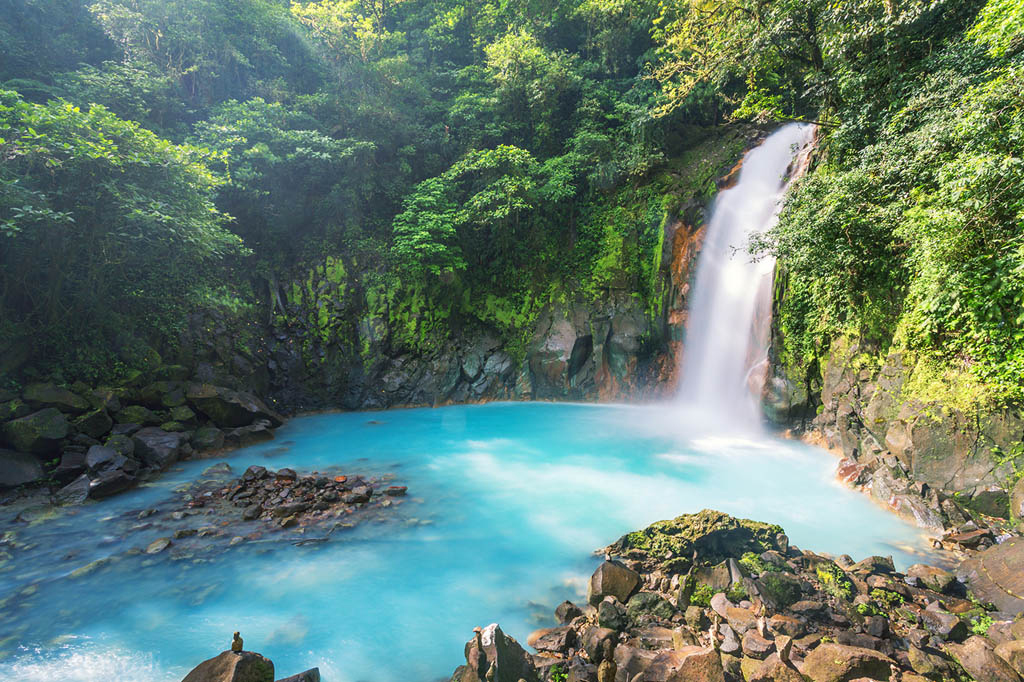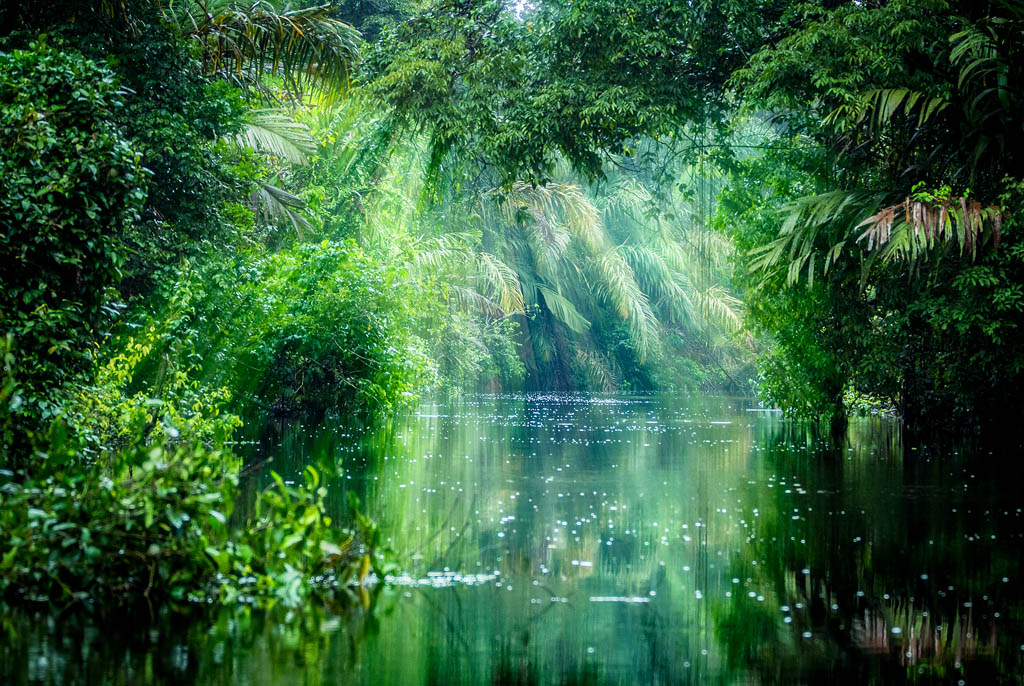The Land
The Pacific Coast
Two major peninsulas hook out into the ocean along the 1016km-long Pacific coast: Nicoya in the north and Osa in the south. Although they look relatively similar from space, on the ground they could hardly be more different. Nicoya is one of the driest places in the country and holds some of Costa Rica’s most developed tourist infrastructure; Osa is wet and rugged, run through by wild, seasonal rivers and rough dirt roads that are always under threat from the creeping jungle.
Just inland from the coast, the Pacific lowlands are a narrow strip of land backed by mountains. This area is equally dynamic, ranging from dry deciduous forests and open cattle country in the north to misty, mysterious tropical rainforests in the south.
Nosara | MATTEO COLOMBO/GETTY IMAGES ©
Central Costa Rica
Move a bit inland from the Pacific coast and you immediately ascend the jagged spine of the country: the majestic Cordillera Central in the north and the rugged, largely unexplored Cordillera de Talamanca in the south. Continually being revised by tectonic activity, these mountains are part of the majestic Sierra Madre chain that runs north through Mexico.
Home to active volcanoes, clear trout-filled streams and ethereal cloud forest, these mountain ranges generally follow a northwest to southeast line, with the highest and most dramatic peaks in the south near the Panamanian border. The highest peak in the country is windswept Cerro Chirripó (3820m).
In the midst of this powerful landscape, surrounded on all sides by mountains, are the highlands of the Meseta Central – the Central Valley. This fertile central plain, some 1000m above sea level, is the agricultural heart of the nation and enjoys abundant rainfall and mild temperatures. It includes San José and cradles three more of Costa Rica’s five largest cities, accounting for more than half of the country’s population.
The Caribbean Coast
Cross the mountains and drop down the eastern slope and you’ll reach the elegant line of the Caribbean coastline – a long, straight 212km along low plains, brackish lagoons and waterlogged forests. A lack of strong tides allows plants to grow right over the water’s edge along coastal sloughs. Eventually, these create the walls of vegetation along the narrow, murky waters that characterize much of the region. As if taking cues from the slow-paced, Caribbean-influenced culture, the rivers that rush out of the central mountains take on a languid pace here, curving through broad plains toward the sea.
While there are smoothly paved main roads along the southern Caribbean coast, the northern Caribbean is still largely inaccessible except by boat or plane.
The Geology
If all this wildly diverse beauty makes Costa Rica feel like the crossroads between vastly different worlds, that’s because it is. As it’s part of the thin strip of land that separates two continents with hugely divergent wildlife and topographical character, and right in the middle of the world’s two largest oceans, it’s little wonder that Costa Rica boasts such a colorful collision of climates, landscapes and wildlife.
The country’s geological history began when the Cocos Plate, a tectonic plate that lies below the Pacific, crashed headlong into the Caribbean Plate, which is off the isthmus’ east coast. Since the plates travel about 10cm every year, the collision might seem slow by human measure, but it was a violent wreck by geological standards, creating the area’s subduction zone. The plates continue to collide, with the Cocos Plate pushing the Caribbean Plate toward the heavens and making the area prone to earthquakes and ongoing volcanic activity.
Despite all the violence underfoot, these forces have blessed the country with some of the world’s most beautiful and varied tropical landscapes.
Coral Reefs
Compared with the rest of the Caribbean, the coral reefs of Costa Rica are not a banner attraction. Heavy surf and shifting sands along most of the Caribbean coast produce conditions that are unbearable to corals. The exceptions are two beautiful patches of reef in the south that are protected on the rocky headlands of Parque Nacional Cahuita and Refugio Nacional de Vida Silvestre Gandoca-Manzanillo. These diminutive but vibrant reefs are home to more than 100 species of fish and many types of coral and make for decent snorkeling and diving.
Unfortunately, the reefs themselves are in danger due to global warming and increased water temperatures, tourism (divers and snorkelers damaging the reefs), and pollutants, like sediments washing downriver from logging operations and toxic chemicals that wash out of nearby agricultural fields. Although curbed by the government, these factors persist. Along with these threats, a major earthquake in 1991 lifted the reefs as much as 1.5m, stranding and killing large portions of this fragile ecosystem.
DON’T DISTURB THE DOLPHINS
Swimming with dolphins has been illegal since 2006, although shady tour operators out for a quick buck may encourage it. Research indicates that in some heavily touristed areas, dolphins are leaving their natural habitat in search of calmer seas. When your boat comes across these amazing creatures of the sea, avoid the temptation to jump in with them – you can still have an awe-inspiring experience peacefully observing them without disturbing them.
Wildlife
Nowhere else are so many types of habitats squeezed into such a tiny area, and species from different continents have been commingling here for millennia. Costa Rica has the world’s largest number of species per 10,000 sq km – a whopping 615. This simple fact alone makes Costa Rica the premier destination for nature-lovers.
The large number of species here is also due to the country’s relatively recent appearance. Roughly three million years ago, Costa Rica rose from the ocean and formed a land bridge between North and South America. As species from these two vast biological provinces started to mingle, the number of species essentially doubled in the area where Costa Rica now sits.
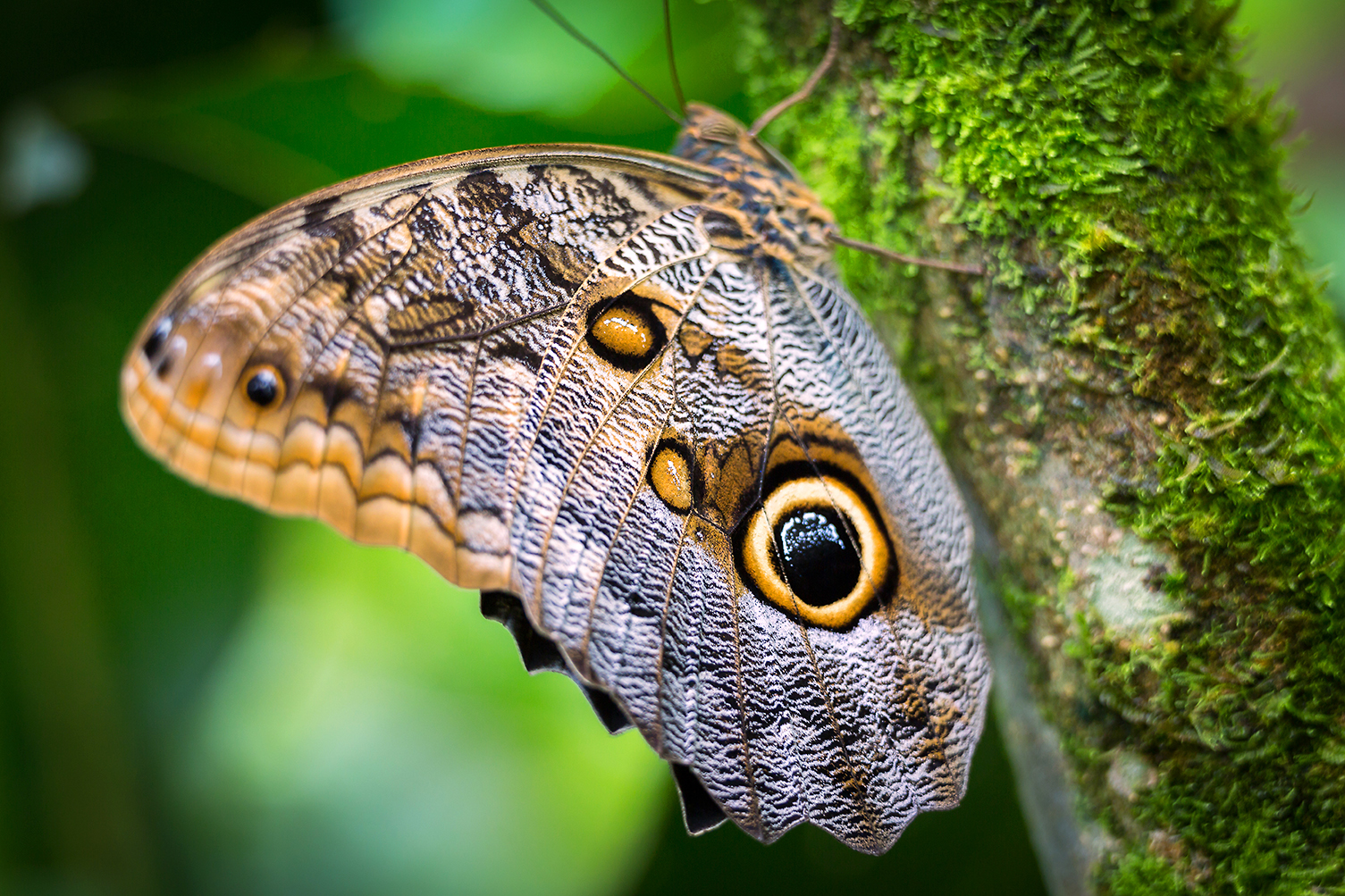
Flora
Simply put, Costa Rica’s floral biodiversity is mind-blowing – there are more than 500,000 species in total, including close to 12,000 species of vascular plant, and the list gets more and more crowded each year. Orchids alone account for about 1400 species. The diversity of habitats created when this many species mix is a wonder to behold.
Rainforest
The humid, vibrant mystery of the tropical rainforest connects acutely with a traveler’s sense of adventure. These forests, far more dense with plant life than any other environment on the planet, are leftover scraps of the prehistoric jungles that once covered the continents. Standing in the midst of it and trying to take it all in can be overwhelming: tropical rainforests contain more than half of the earth’s known living organisms. Naturally, this riotous pile-on of life requires lots of water – the forest typically gets between 5m and 6m of rainfall annually (yes, that’s meters!).
Classic rainforest habitats are well represented in the parks of southwestern Costa Rica or in the mid-elevation portions of the central mountains. Here you will find towering trees that block out the sky, long, looping vines and many overlapping layers of vegetation. Large trees often show buttresses – wing-like ribs that extend from their trunks for added structural support. And plants climb atop other plants, fighting for a bit of sunlight. The most impressive areas of primary forest – a term designating completely untouched land that has never been disturbed by humans – exist on the Península de Osa.
Cloud Forest
Visiting the unearthly terrain of a cloud forest is a highlight for many visitors; there are amazing swaths of it in Monteverde, along the Cerro de la Muerte and below the peaks of Chirripó. In these regions, fog-drenched trees are so thickly coated in mosses, ferns, bromeliads and orchids that you can hardly discern their true shapes. These forests are created when humid trade winds off the Caribbean blow up into the highlands, cool and condense to form thick, low-hanging clouds. With constant exposure to wind, rain and sun, the trees here are crooked and stunted.
Cloud forests are widespread at high elevations throughout Costa Rica and any of them warrant a visit. Be forewarned, however, that in these habitats the term ‘rainy season’ has little meaning because it’s always dripping wet from the fog – humidity in a cloud forest often hovers around 100%.
Cattleya orchid | IMAGES ETC LTD/GETTY IMAGES ©
Tropical Dry Forest
Along Costa Rica’s northwestern coast lies the country’s largest concentration of tropical dry forest – a stunningly different scene to the country’s wet rainforests and cloud forests. During the dry season many trees drop their foliage, creating carpets of crackling, sun-drenched leaves and a sense of openness that is largely absent in other Costa Rican habitats. The large trees here, such as Costa Rica’s national tree, the guanacaste, have broad, umbrella-like canopies, while spiny shrubs and vines or cacti dominate the understory. At times, large numbers of trees erupt into spectacular displays of flowers, and at the beginning of the rainy season everything is transformed with a wonderful flush of new, green foliage.
This type of forest was native to Guanacaste and the Península de Nicoya, though it suffered generations of destruction for its commercially valuable lumber. Most was clear-cut or burned to make space for ranching. Guanacaste and Santa Rosa national parks are good examples of the dry forest and host some of the country’s most accessible nature hiking.
Mangroves
Along brackish stretches of both coasts, mangrove swamps are a world unto themselves. Growing on stilts out of muddy tidal flats, five species of tree crowd together so densely that no boats and few animals can penetrate. Striking in their adaptations for dealing with salt, mangroves thrive where no other land plant dares tread and are among the world’s most relentless colonizers. Mangrove seeds are heavy and fleshy, blooming into flowers in the spring before falling off to give way to fruit. By the time the fruit falls, it is covered with spiky seedlings that anchor in the soft mud of low tides. In only 10 years, a seedling has the potential to mature into an entire new colony.
Mangrove swamps play extremely important roles in the ecosystem. Not only do they buffer coastlines from the erosive power of waves but also they have high levels of productivity because they trap nutrient-rich sediment and serve as spawning and nursery areas for innumerable species of fish and invertebrate. The brown waters of mangrove channels – rich with nutrients and filled with algae, shrimp, crustaceans and caimans – form tight links in the marine food chain and are best explored in a kayak, early in the morning.
There are miles of mangrove channels along the Caribbean coast, and a vast mangrove swamp on the Pacific, near Bahía Drake.
Fauna
Though tropical in nature – with a substantial number of tropical animals such as poison-dart frogs and spider monkeys – Costa Rica is also the winter home for more than 200 species of migrating bird that arrive from as far away as Alaska and Australia. Don’t be surprised to see one of your familiar backyard birds feeding alongside trogons and toucans. Birds are one of the primary attractions for naturalists, who scan endlessly for birds of every color, from strawberry-red scarlet macaws to the iridescent jewels called violet sabrewings (a type of hummingbird). Because many birds in Costa Rica have restricted ranges, you are guaranteed to find different species everywhere you travel.
Visitors will almost certainly see one of Costa Rica’s four types of monkey or two types of sloth, but there are an additional 230 types of mammal awaiting the patient observer. More exotic sightings might include the amazing four-eyed opossum or the silky anteater, while a lucky few might spot the elusive tapir or have a jaguarundi cross their path. The extensive network of national parks, wildlife refuges and other protected areas are prime places to spot wildlife.
If you are serious about observing birds and animals, the value of a knowledgeable guide cannot be underestimated. Their keen eyes are trained to notice the slightest movement in the forest, and they recognize the many exotic sounds. Most professional bird guides are proficient in the dialects of local birds, greatly improving your chances of hearing or seeing these species.
No season is a bad one for exploring Costa Rica’s natural environment, though most visitors arrive during the peak dry season, when trails are less muddy and more accessible. A bonus of visiting between December and February is that many of the wintering migrant birds are still hanging around. A trip after the peak season means fewer birds, but this is a stupendous time to see dry forests transform into vibrant greens and it’s also when resident birds begin nesting.
Endangered Species
As expected in a country with unique habitats and widespread logging, there are numerous species whose populations are declining or in danger of extinction. Currently, the number-one threat to most of Costa Rica’s endangered species is habitat destruction, followed closely by hunting and trapping.
Costa Rica’s four species of sea turtle – olive ridley, leatherback, green and hawksbill – deservedly get a lot of attention. All four species are classified as endangered or critically endangered, meaning they face an imminent threat of extinction. While populations of some species are increasing, thanks to various protection programs along both coasts, the risk for these tortugas (turtles) is still very real.
Destruction of habitat is a huge problem. With the exception of the leatherbacks, all of these species return to their natal beach to nest, which means that the ecological state of the beach directly affects that turtle’s ability to reproduce. All of the species prefer dark, undisturbed beaches, and any sort of development or artificial lighting (including flashlights) will inhibit nesting.
Hunting and harvesting eggs are two major causes of declining populations. Green turtles are hunted for their meat. Leatherbacks and olive ridleys are not killed for meat, but their eggs are considered a delicacy – an aphrodisiac, no less. Hawksbill turtles are hunted for their unusual shells, which are sometimes used to make jewelry and hair ornaments. Of course, any trade in tortoiseshell products and turtle eggs and meat is illegal, but a significant black market exists.
The ultra-rare harpy eagle and the legendary quetzal – the birds at the top of every naturalist’s must-see list – teeter precariously as their home forests are felled at an alarming rate. Seeing a noisy scarlet macaw could be a birdwatching highlight in Costa Rica, but trapping for the pet trade has extirpated these magnificent birds from much of their former range. Although populations are thriving on the Península de Osa, the scarlet macaw is now extinct over most of Central America, including the entire Caribbean coast.
A number of Costa Rica’s mammals are highly endangered, including the elusive jaguar and the squirrel monkey, both due to destruction of habitat. The two survive in the depths of Parque Nacional Corcovado, with the latter also found in some numbers in Parque Nacional Manuel Antonio.
Harassment and intimidation of conservationists in Costa Rica is nothing new, and although the brutal murder of 26-year-old environmentalist Jairo Mora Sandoval in Limón Province in 2013 brought the issue to international attention, those accused of his murder were initially acquitted. In 2015, seven men were accused of Sandoval’s murder. Four of the men were not convicted of murder but of assault, kidnapping and aggravated robbery for a crime that took place after Mora’s murder. Then in 2016, after an appeal, the not-guilty verdict was overturned. Each of the men is serving 50 years in prison, the maximum sentence in Costa Rica.
National Parks & Protected Areas
The national-park system began in the 1960s, and has since been expanded into the Sistema Nacional de Areas de Conservación (National System of Conservation Areas; Sinac), with an astounding 186 protected areas, including 27 national parks, eight biological reserves, 32 protected zones, 13 forest reserves and 58 wildlife refuges. At least 10% of the land is strictly protected and another 17% is included in various multiple-use preserves. Costa Rican authorities take pride in the statistic that more than 27% of the country has been set aside for conservation, but multiple-use zones still allow farming, logging and other exploitation, so the environment within them is not totally protected. The smallest number might be the most amazing of all: Costa Rica’s parks are a safe haven to approximately 5% of the world’s wildlife species.
In addition to the system of national preserves, there are hundreds of small, privately owned lodges, reserves and haciendas (estates) that have been set up to protect the land. Many belong to longtime Costa Rican expats who decided that this country was the last stop in their journey along the ‘gringo trail’ in the 1970s and ‘80s. The abundance of foreign-owned protected areas is a bit of a contentious issue with Ticos. Although these are largely nonprofit organizations with keen interests in conservation, they are private and often cost money to enter. There’s also a number of animal rescue and rehabilitation centers (also largely set up by expats), where injured and orphaned animals and illegal pets are rehabilitated and released into the wild, or looked after for life if they cannot be released.
Although the national-park system appears glamorous on paper, the Sinac authority still sees much work to be done. A report from several years ago amplified the fact that much of the protected area is, in fact, at risk. The government doesn’t own all of this land – almost half of the areas are in private hands – and there isn’t the budget to buy it. Technically, the private lands are protected from development, but there have been reports that many landowners are finding loopholes in the restrictions and selling or developing their properties, or taking bribes from poachers and illegal loggers in exchange for access.
On the plus side is a project by Sinac that links national parks and reserves, private reserves and national forests into 13 conservation areas. This strategy has two major effects. First, these ‘megaparks’ allow greater numbers of individual plants and animals to exist. Second, the administration of the national parks is delegated to regional offices, allowing a more individualized management approach. Each conservation area has regional and subregional offices charged with providing effective education, enforcement, research and management, although some regional offices play what appear to be only obscure bureaucratic roles.
In general, support for land preservation remains high in Costa Rica because it provides income and jobs to so many people, plus important opportunities for scientific investigation.
Environmental Issues
No other tropical country has made such a concerted effort to protect its environment, and a study published by Yale and Columbia Universities in 2012 ranked Costa Rica in the top five nations for its overall environmental performance. At the same time, as the global leader in the burgeoning ecotourism economy, Costa Rica is proving to be a case study in the pitfalls and benefits of this kind of tourism. The pressures of overpopulation, global climate change and dwindling natural resources have also made it a key illustration of the urgency of environmental protection.
Deforestation
Sometimes, when the traffic jams up around the endless San José sprawl, it is hard to keep in mind that this place was once covered in a lush, unending tropical forest. Tragically, after more than a century of clearing for plantations, agriculture and logging, Costa Rica lost about 80% of its forest cover before the government stepped in with a plan to protect what was left. Through its many programs of forest protection and reforestation, 54% of the country is forested once again – a stunning accomplishment.
Despite protection for two-thirds of the remaining forests, cutting trees is still a major problem for Costa Rica, especially on private lands that are being cleared by wealthy landowners and multinational corporations. Even within national parks, some of the more remote areas are being logged illegally because there is not enough money for law enforcement.
Apart from the loss of tropical forests and the plants and animals that depend on them, deforestation leads directly or indirectly to a number of other severe environmental problems. Forests protect the soil beneath them from the ravages of tropical rainstorms. After deforestation, much of the topsoil is washed away, lowering the productivity of the land and silting up watersheds and downstream coral reefs.
Cleared lands are frequently planted with a variety of crops, including acres of bananas, the production of which entails the use of pesticides as well as blue plastic bags to protect the fruit. Both the pesticides and the plastic end up polluting the environment. Cattle ranching has been another historical motivator for clear-cutting. It intensified during the 1970s, when Costa Rican coffee exports were waning in the global market.
Because deforestation plays a role in global warming, there is much interest in rewarding countries such as Costa Rica for taking the lead in protecting their forests. The US has forgiven millions of dollars of Costa Rica’s debt in exchange for increased efforts to preserve rainforests. The Costa Rican government itself sponsors a program that pays landowners for each hectare of forest they set aside, and has petitioned the UN for a global program that would pay tropical countries for their conservation efforts. Travelers interested in taking part in projects that can help protect Costa Rica’s trees should look to volunteer opportunities in conservation and forestry.
Tourism
The other great environmental issue facing Costa Rica comes from the country being loved to death, directly through the passage of around two million foreign tourists a year, and less directly through the development of extensive infrastructure to support this influx. For years, resort hotels and lodges continued to pop up, most notably on formerly pristine beaches or in the middle of intact rainforest. Too many of these projects were poorly planned, and they necessitate additional support systems, including roads and countless vehicle trips, with much of this activity unregulated and largely unmonitored.
As tourism continues to become a larger piece of the Costa Rican economy, the bonanza invites more and more development. Taking advantage of Costa Rica’s reputation as a green destination, developers promote mass tourism by building large hotels and package tours that, in turn, drive away wildlife, hasten erosion and strain local sewer and water systems. The irony is painful: these businesses threaten to ruin the very environment that they’re selling.
It’s worth noting that many private lodges and reserves are also doing some of the best conservation work in the country, and it’s heartening to run across the ever-increasing homespun efforts to protect Costa Rica’s environment, spearheaded by hardworking families or small organizations tucked away in some quiet corner of the country. These include projects to boost rural economies by raising native medicinal plants, efforts by villagers to document their local biodiversity, and resourceful fundraising campaigns to purchase endangered lands.
Sustainable Travel
Costa Rica’s visitors presently account for the largest sector of the national economy and thus have unprecedented power to protect this country. How? By spending wisely, asking probing questions about sustainability claims and simply avoiding businesses that threaten Costa Rica’s future.
In its purest form, sustainable tourism simply means striking the ideal balance between the traveler and their surrounding environment. This often includes being conscientious about energy and water consumption, and treading lightly on local environments and communities. Sustainable tourism initiatives support their communities by hiring local people for decent wages, furthering women’s and civil rights, and supporting local schools, artists and food producers.
On the road, engage with the local economy as much as possible; for example, if a local artisan’s handiwork catches your eye, make the purchase – every dollar infuses the micro-economy in the most direct (and rewarding) way.
Ecofriendly Credentials
Interpreting the jargon – ‘green,’ ‘sustainable,’ ‘low carbon footprint,’ ‘ecofriendly’ etc – can be confusing when every souvenir stall and tour operator claims to be ecofriendly. Since sustainable travel has no universal guidelines, here are some things to look for:
AFor hotels and restaurants, obvious recycling programs, effective management of waste water and pollutants, and alternative energy systems and natural illumination, at a bare minimum.
AA high rating from a legitimate sustainability index. In Costa Rica, the government-sanctioned Certificado para la Sostenibilidad Turística (CST; www.turismo-sostenible.co.cr) offers a ‘five-leaf’ rating system. Factors considered by the CST include physical-biological parameters, infrastructure and services, and socioeconomic environment, including interaction with local communities. Its website has a complete directory.
APartnership with environmental conservation programs, education initiatives, or regional or local organizations that work on solving environmental problems.
AGrassroots connections: sourcing a majority of employees from the local population, associating with locally owned businesses, providing places where local handicrafts can be displayed for sale, serving foods that support local markets, and using local materials and products in order to maintain the health of the local economy.
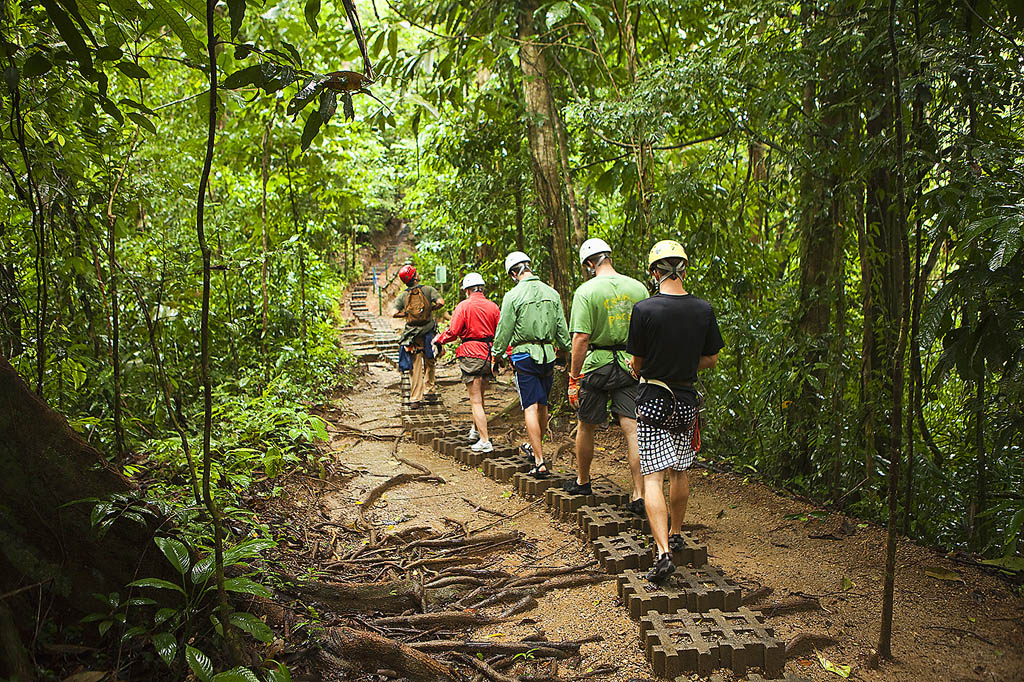
Hiking near San José | DREAMPICTURES/SHANNON FAULK/GETTY IMAGES ©
